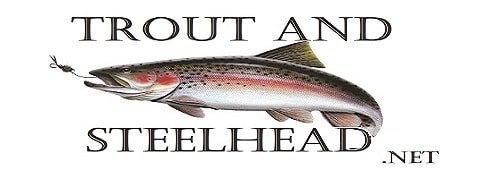Salmon Fishing With Worms
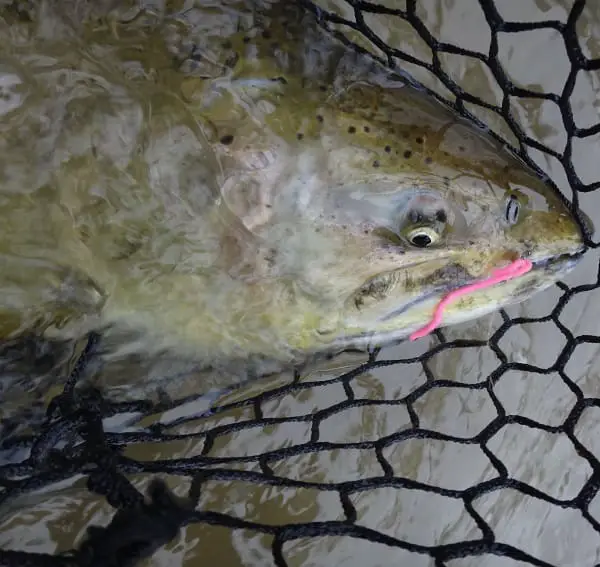
Having been a guide for salmon for over two decades and a passionate angler for over 37 years, one of the things I have experimented with is salmon fishing with worms. I’ve tried many of the most popular baits that everyone uses, but catching salmon with worms is something you don’t hear much about.
I’ve had outstanding success with specific types of worms for salmon once they enter the river.
In this article, I’ll discuss my honest opinions about using worms as bait for salmon and compare worms to other popular baits. I will also provide some valuable tips to boost your success rate when fishing salmon with worms.
Salmon Fishing With Worms
Are worms actually good bait for salmon? Will all salmon eat worms? What types and sizes of worms are best? Can worms help you land more salmon? Should worms be your first choice when going salmon fishing? Do professional guides resort to worms for salmon fishing? These are the questions I aim to answer in this article. So, keep reading!
Just be sure the fishing regulations in your area permit using worms as bait.
Do Worms Really Work as Bait for Salmon Fishing?
Out in the ocean, these same salmon are chasing around baitfish daily, but once they enter the river, salmon will feed opportunistically on most baits that catch their attention, and certain worms actually work very well.
I have experimented with various types of worms and rigged them in many ways. I’ve used whole live worms, I’ve cut them into pieces of different dimensions and put them on a hook, and I’ve used an assortment of artificial worms.
Surprisingly, I’ve caught salmon using worms as bait for over 30 years but few anglers and guides use worms as bait for salmon fishing. I’ve conducted numerous tests using worms in varying conditions and found them to be effective for both wild and stocked salmon.
All salmon, even sockeye salmon, can be caught using worms, but often, it is chinook, coho, chum, Atlantic salmon, and pink salmon that will readily grab a well-presented worm.
However, before you toss away your other baits and jump onto the worms bandwagon, there are some crucial factors you should consider.
Salmon, intelligent as they are, tend to be opportunistic feeders, often biting at a range of baits, including non-food objects as long as it resembles food. This is why anglers will catch salmon on stuff like marshmallows, Berkely dough bait, and even corn. Worms are natural baits so they can be a good option.
Moreover, when an object drifts close to a salmon in a fast current, the fish may instinctively grab it due to the limited time to inspect the bait, and since a worm has a fairly large profile they get hit.
In slower or stagnant water bodies, where salmon have ample time to inspect the bait, the effectiveness of worms is a little less effective.
In my view, worms do work, but to what extent? Their effectiveness is arguable, especially when compared to other baits. I will delve into this further.
Choosing Worms for Salmon
Some anglers use worms as bait when fishing for salmon in rivers or from piers and shorelines, but which worms are the most effective, or does it really matter?
Live Worms For Salmon Fishing
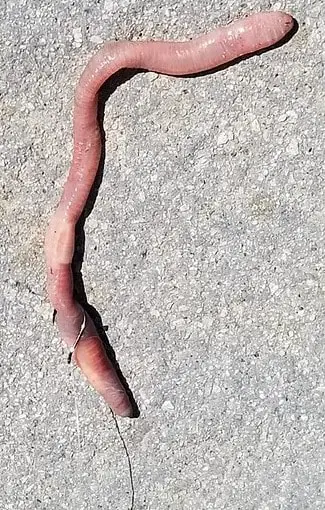
As mentioned above, I’ve used both live and artificial worms. My go-to when fishing still waters is live worms due to them being real, and since they are alive there is possible movement which might entice movement.
The downside to real worms is that they can fall off the hook easily on hard hook sets or when cast out aggressively. They are also harder to get, harder to store, and harder to transport on the river.
The upside is they will sometimes work better than artificial worms.
Artificial Worms For Salmon Fishing
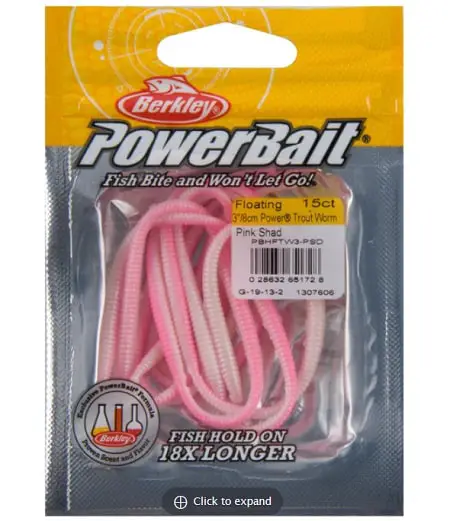
When fishing in moving water, I have found that both live and plastic worms are equally effective since the current moves and provides action to the worm.
However, since my tests have proven that they are both equally effective, I use plastic worms 90% of the time.
The advantage of salmon fishing with plastic worms is:
- They are easy to carry and store forever.
- They are reusable.
- They stay on the hook when cast out aggressively.
- They come in multiple enticing colors that seem to attract salmon better than natural worms.
- They come in sizes from about 2 inches to 6 inches.
Worm Size For Salmon Fishing
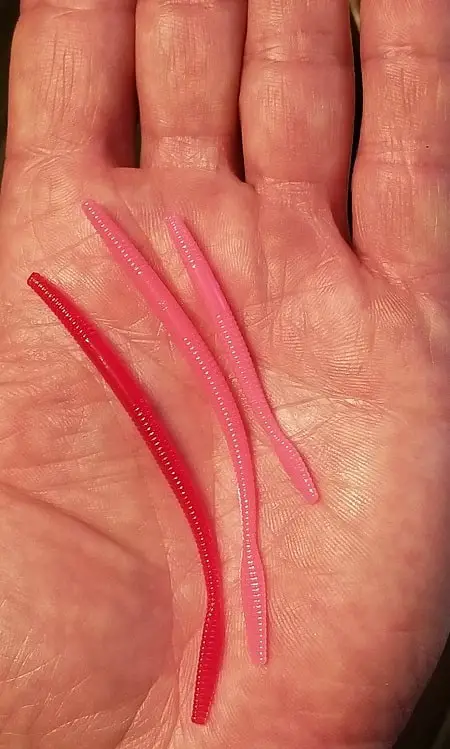
When it comes to the size of the worms, I have found that worms in the 4 to 5-inch sizes are best in still water. I have done well with this size in rivers, but my go-to size is 3-inch to 4-inch worms in the rivers.
Also, in higher or murkier water, I opt for larger worms that are sometimes up to 6 inches in length.
In low and clear water with current, or when salmon are holding and are spooked, smaller worms around 2 inches are worth trying.
Experimenting with worm dye to alter my live worm colors has yielded positive results for me. Greens and yellows, and reds are my go-to colors if I choose to dye the worms.
Picking the Right Hook for Worms
Considerations such as hook type, hook size, and baiting the hook properly are critical in increasing your chances of hooking salmon.
Choosing The Appropriate Hook for Worms
Selecting the correct hook is vital for successful salmon angling with any bait, particularly with worms and salmon.
When it comes to hooks, a short shank, wide gap hook with a razor-sharp point is ideal. As all hooks are not created equal, especially when fishing large strong fish like salmon, so choosing your hook wisely is crucial.
A good hook will easily penetrate the fish’s mouth and secure a firm hold during a battle. Seasoned guides lean towards hooks that substantially increase the chances of reeling in fish.
For salmon fishing with worms, I suggest using Raven Specimen Hooks or Gamakatsu Octopus hooks in sizes 2 to 8. I’ll discuss selecting the right hook size below.
Professional guides prefer these brands of hooks which can enhance your chances of catching salmon using any bait, including worms.
Avoid treble hooks, which can harm fish and are challenging to remove if lodged deep. Opt for high-quality single hooks that provide excellent hooking and holding percentages instead.
Hook Size For Worms
The hook size should correspond to the size of the worm. A hook that’s too large might deter salmon from grabbing the bait due to its visibility.
Contrarily, a hook that’s too small might not effectively hook the salmon during the hookset, resulting in a weak hold while battling the fish. Smaller hooks are also more susceptible to bending or breaking with large salmon.
Setting up a Worm on the Hook
The same advice I give to my clients applies to any bait, not just worms. Proper bait rigging can double or triple the amount of salmon you catch.
I always ensure the hook point is fully exposed and not obscured by the worm or any bait. This is critical for increasing your success rate. An exposed hook point has a higher chance of self-hooking the salmon.
Without diving deep into the theory, let me tell you I’ve seen many salmon, steelhead, and trout get self-hooked simply by the current pulling on the line and bait.
If the hook point isn’t exposed, this won’t happen.
The hook’s gap should also be wide enough to securely hook the salmon.
To hook a worm properly, thread the hook through the worm so that the point is exposed. You can either thread it through the middle of the worm or through one end, depending on the size of the worm and the hook you’re using.
Guide Tip: DO NOT ball up your worm on the hook. This is a bad rookie mistake.
Methods For Fishing Salmon with Worms
There are a few methods that I use when salmon fishing with worms.
Bottom Fishing Or Plunking
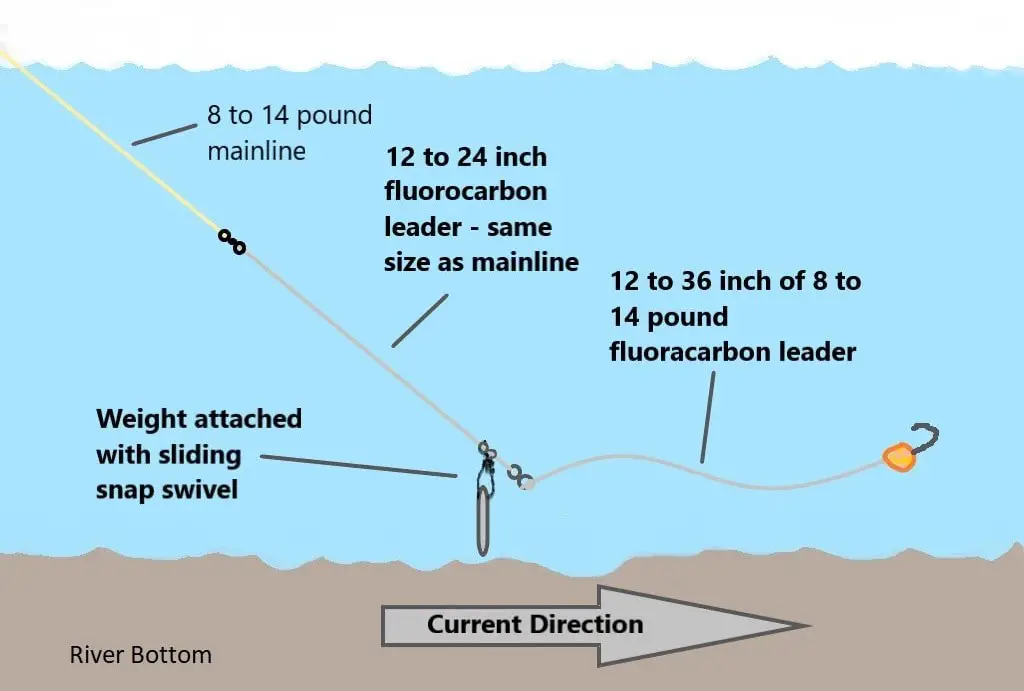
When using the stationary rig known as the bottom rig or the plunking rig, cast your line and let the weight and bait sink to the riverbed or bottom of the area you are fishing. Keep a slightly slack line to give the salmon an opportunity to swim a bit with the bait.
I and other guides will use a floating bead to keep the worm 2 to 3 feet off the bottom. You can also use a worm blower to force air into the worm to make it float.
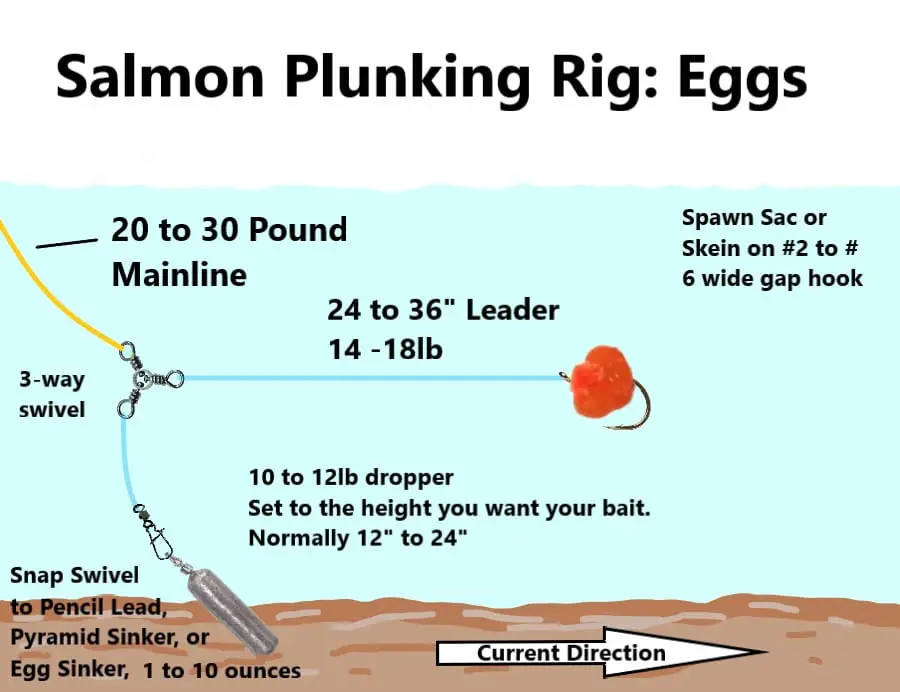
Watch your rod tip and the line, and if you notice the line starts pulling out, that usually indicates a bite. This approach can boost your chances for a successful hookset. If you notice the rod tip twitching or the line pulling out close to the bait, set the hook hard.
Float Fishing With Worms
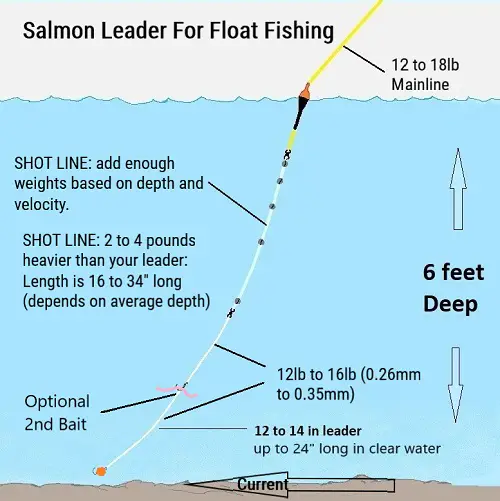
Float fishing is often my most effective method for fishing worms in rivers.
In still or deep water, I will use a slip float to cast easily and get the optimal depth.
When fishing worms in rivers or when fishing in less than 12 feet deep, I prefer a stationary float. Rather than using round bobbers, go for pencil-style or thin-style floats.
The Raven FM float is a great float used by many seasoned guides and anglers.
For full details, check out Float Fishing For Salmon.
Interested in more fantastic salmon setups used by guides? Check out my article: 5 Most Effective Salmon Fishing Rigs Used By Guides.
Advanced Tips and Techniques For Worm Fishing Salmon
To boost your salmon catch rates using worms, consider the following tips:
Hooking the Worm Properly: Thread the hook through the worm so that the point is always exposed. This enhances the odds of a successful hookset when the salmon strikes.
Reducing line visibility: Known for their sharp vision, salmon can spot fishing lines, especially the thicker ones. Opting for a fluorocarbon leader of around 12 to 14 pounds, which is less visible underwater, can improve your success rates.
Weather considerations: Salmon tend to be more active during overcast weather, early mornings, or late evenings. Angling during these periods can augment your success odds.
Fishing at the correct depth: Salmon typically swim about 1 to 3 feet from the riverbed. Position your bait at this depth to increase your chances of attracting salmon. Use a floating bead to suspend the worm off the river bottom at the right height.
Adding scent: Some fishermen enhance the allure of their bait by adding commercially available scents or substances such as garlic oil.
Presentation and Controlling Speed: in my many tears of experience, I have concluded that a great presentation and controlling the speed of your bait is crucial. Failure to do so results in far fewer fish caught.
Comparing Worms to Other Salmon Baits
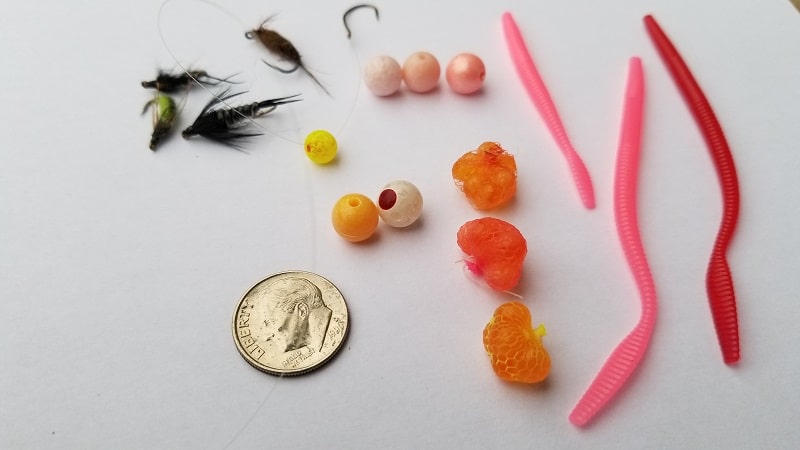
While worms have earned a spot in the salmon bait scene, they don’t quite measure up to other baits in terms of success rates.
Although it can be an amusing experiment to use worms, regular catches with them are less common when compared to other baits.
Although some anglers swear by worms, it’s challenging to determine if using worms as bait would lead to equal or better outcomes than using proven baits like spawn bags or artificial lures.
Exploring High-Percentage Baits for Best Results
To improve your odds of success, it’s advisable to rely on baits that have repeatedly proven their effectiveness and consistently catch salmon.
Pro guides typically prefer baits that have a consistently high success rate
even when dealing with selective fish and larger, more wary wild salmon.
There are many baits you could use for salmon fishing, such as artificial lures, flies, shrimp, skein, and grubs.
My findings are pretty clear that brighter baits generally work better, such as spawn bags and artificial lures. These are the baits you should be considering, and I explore these and more on my page: 10 Best Salmon Baits: How And When To Use Them.
Worms Good Or Bad For Salmon Fishing? The Verdict
Based on my personal experience, I wouldn’t regularly depend on worms as the primary bait for salmon fishing, especially when guiding clients. However, there have been times when worms have saved the day.
The downside to worms is the effort to obtain them, storing them and keeping them alive, and carrying them on the river. For this reason most anglers fish salmon with eggs.
Should You Use Worms for Salmon Fishing?
I believe worms can be an additional bait option when other, better-proven baits aren’t producing results.
However, I wouldn’t suggest them as the primary choice. It’s always recommended to use baits that have a high success rate and are trusted by professional guides.
Do Salmon Guides Use Worms?
Some top salmon guides are using worms for salmon fishing in various conditions.
The primary goal of a proficient guide is to ensure their clients have the best chance of landing a considerable number of salmon. Therefore, they usually depend on superior baits with proven effectiveness, however, at times, worms can be very effective.
Salmon Fishing with Worms: Q&A
If you have any queries, insights, or advice about salmon fishing with worms, feel free to share them in the comments section below.
Tight Lines,
Graham
